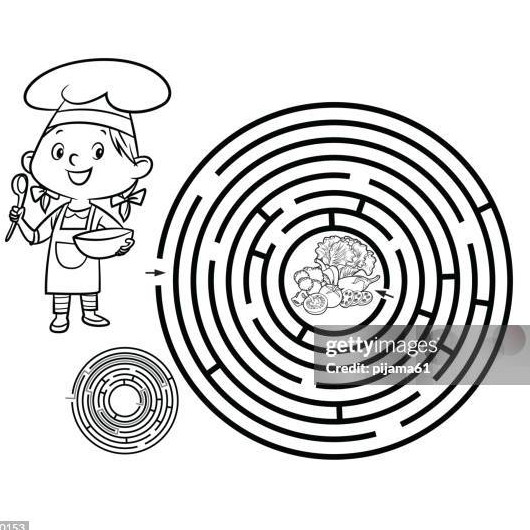The difference between classes that you do and forget about, and classes that stick with you and shape how you think, is almost entirely based on instructional design. Concepts like backward design, understanding by design, design thinking, learning outcomes, and project-based learning are more than just buzzwords, but tools that explain why some learning experiences felt meaningful, while others felt like busy work.
Backward Design and Understanding by Design
The idea of Understanding by Design is a educational framework which operates in three stages:
- Identify Desired Results – long-term goals, essential questions, key understandings
- Determine Evidence – assessments to show learning (performance tasks, projects, tests, etc.)
- Plan Learning Experiences & Instruction – align activities to outcomes and evidence
Basically, start at the end and end at the start, or, more eloquently, design backwards.

The idea of starting with the end in mind sounds obvious once you hear it. I used to be obsessed with those mazes you’d find on diner kids menus, and I always solved them end to beginning, because it was the most efficient strategy. I see the appeal of backward design, and it blows my mind that this is barely mentioned in the Bachelor of Education programme. Backward design would be fantastic, except we don’t even get our assessment class until the second semester of year 3. If I was exposed to this theory earlier, I would’ve implemented it into my practicum.
My high school Calculus teacher was one of my favourite teachers ever. She had a doctorate in math and, looking back on her class, I think she infused the idea of backward design into her lessons. She had clear exams, even practice test so we could familiarize ourselves with what kind of material would be on the exam. She never used scantron because she understood that, although math is either right or wrong, it’s easy to make mistakes, and one mistake shouldn’t cost you your grade. Finally, she only assigned homework to students who needed extra practice, understanding that for students who understood the material, it was just busy work. Her class, and her teaching style, will always stand out to me because of her clear instruction, assessment, and lack of busy work. Her class felt meaningful and learning felt fun.
Backward design ensures that the lessons are rooted in learning goals, rather than busy work or random activities. Educators must ask themselves, “What is it that I want my students to be able to do by the end?” which creates a better planned, laid out, and more holistic learning experience.
Design Thinking
Design thinking is an educational concept which is stretched over five phases:
- Empathy – who is impacted and what are their needs?
- Define – clarify the problem, constraints, and resources
- Ideate – brainstorm possible solutions
- Prototype – build or sketch possible solutions
- Test – share, refine, repeat
What stood out to me about design thinking is the emphasis on empathy. Problem-solving requires looking at the problem from an outside perspective, or even by stepping into someone else’s shoes. The moment I learned about this, it reminded me of an old quote:

To be loved to the point of invention, that is the goal. This story, of the creation of rubber gloves, is a romantic view of design thinking. The surgeon had to step into his wife’s shoes, see how her hands were being irritated at work, and create something to solve this problem. This process mirrors design thinking perfectly.
In my future teaching practice, I plan to invoke this framework into lessons on Indigenous land, climate change, invasive species, and more. By allowing learners to see these problems from an alternate perspective, they themself are suddenly aware of challenges presented, which makes the process of problem-solving much more meaningful.
Learning Outcomes and Taxonomies
I am more than familiar with Bloom’s Taxonomy, but I have never heard of the SOLO (Structure of Observed Learning Outcomes) Taxonomy until now. Bloom’s goes into what students should be able to do at the end, using clear, measurable terms, while SOLO’s measures the depth of student learning.
| Vague Verbiage | Specific Learning Outcomes |
| Students will know hip hop culture | Students will be able to describe the cultural significance of hip hop dance |
| Students will do a hip hop combo | Students will be able to demonstrate basic hop hop moves in sequence |
| Students will perform a dance | Students will be able to create and perform a 16-count hip hop dance |

To me, I think Bloom’s is more helpful in learning design, while SOLO is more helpful in learning assessment. While I’m more familiar with Boom’s and thus partial to it, I am sure I will be getting good use out of both of these in my future career.
Better Learning Design
Surface vs Deep Learning
| Surface-Level Learning | Deep Learning |
| Minimal effort, memorization, low-level skills | Applying, analyzing, evaluating, critiquing |
Reflecting on my experiences in school, I definitely fell into surface-level learning quite a bit. I would memorize formulae and facts to pass an exam, and the moment I would see that “A,” I would completely forget everything that I learned. I was not learning the material because I was engaged, but simply because I needed to pass that test and move onto the next thing.

This contrasts completely with how I am in dance classes. I’ve been an avid dancer for six years, trained in every style you can name except ballet. In dance class, my learning is deep. I went above and beyond memorizing moves, I would practice and apply concepts of rhythm and style that still stick with me now. Between these two experiences, the design is what sets them apart. School felt objective, disconnected, and focused more on grades, while dance was hands-on, iterative, and engaging.
Inquiry and Project-Based Learning
As an education student, inquiry and project-based learning is something I’m all-too familiar with. When students get to explore something they’re interested in, using authentic questions, they feel a sense of ownership over their learning. My work in the Bachelor of Education programme has shown me this first-hand, as a large portion of our assignments are inquiry-based. These kinds of projects allow students to guide their own research, which can feel a lot more meaningful and motivating than traditional assignments.
This approach creates a more holistic learning experience and fosters a deeper connection to content, especially when tied to personal interests. Of course, it comes with many challenges too:
- ensuring that inquiry projects align with the BC cirriculum
- managing time for inquiry projects
- providing enough structure while still allowing freedom of choice
Every good thing comes with a challenge, and I believe that the benefits of inquiry-directed learning outweigh the challenges. Project-based learning prepares students for the world outside of school, where learning comes from exploration and collaboration.
Conclusion
Module 2 helped me connect the dots between theory and practice. Backward design ensures clarity, design thinking centers empathy, Bloom’s taxonomy strengthens outcomes, and project-based learning gives students real-world ownership. Together, these ideas push learning beyond surface-level memorization into something that really sticks.
As I continue in education, I want to keep asking myself: Am I designing for deep, lasting learning?